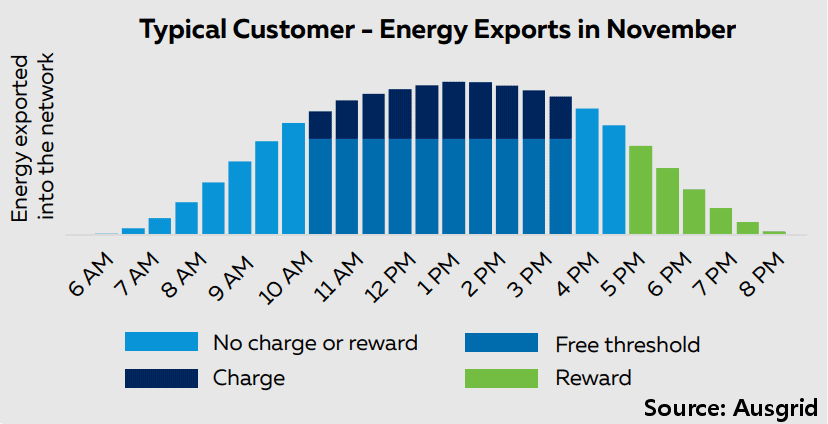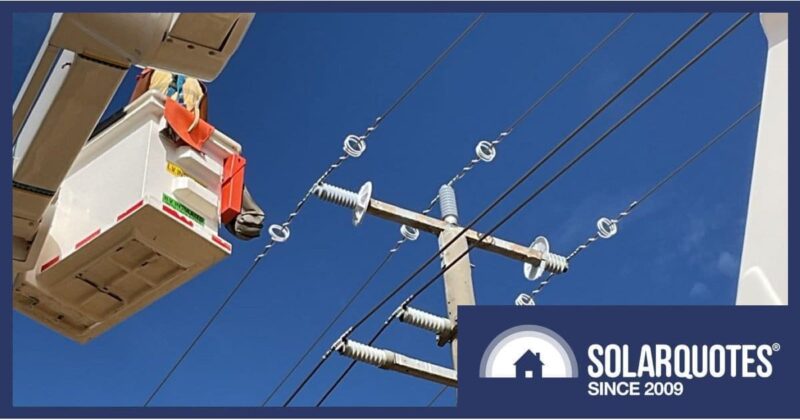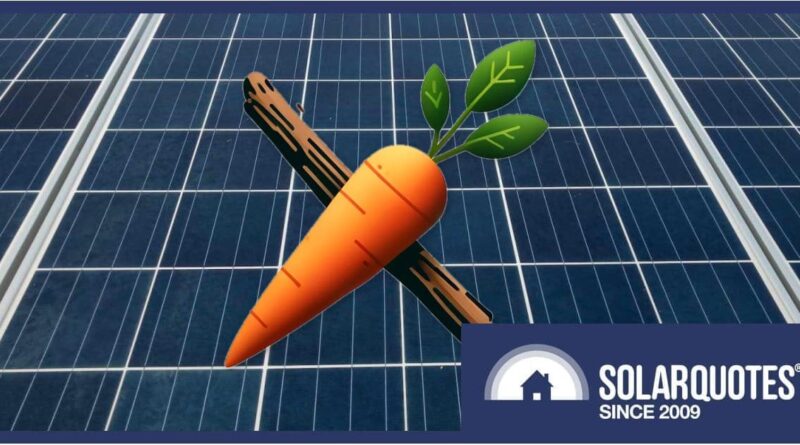Ausgrid’s Two-Way Pricing For Solar Exports Looms

Many solar owners in New South Wales will soon be subjected to “two-way” tariffs. Find out what that means and how it will work.
Ausgrid is the largest distributor of electricity on Australia’s east coast, providing electricity to 1.8 million customers in Sydney, the Central Coast and the Hunter Valley. Its network of substations, powerlines, underground cables and power poles spans 22,275 square kilometres.
Like other Distributed Network Service Providers (DNSPs), Ausgrid has been grappling with an influx of solar energy goodness from residential solar power system exports. It’s a case of too much of a good thing at times; particularly between the hours of 10 am and 3 pm when solar system output generally reaches a maximum. Too much can potentially lead to network stability issues.
Ausgrid has come up with a carrot-and-stick approach with two-way pricing in the hope of encouraging solar owners to maximise solar self-consumption during the 10 am to 3 pm period. After a trial currently under way, this is expected to kick in across the network starting July this year.
What Is Two-Way Pricing?
The first thing to understand is two-way pricing and feed in tariffs are separate beasties, but the former will impact the latter. Two-way pricing, aka a two-way tariff, provides a couple of signals – a reward for exporting to the grid when it’s needed and a charge for when it’s not.
In Ausgrid’s case, it intends applying a 1.2 c/kWh charge when solar electricity is exported between the hours of 10am and 3pm, and rewarding solar owners with a payment or credit of 2.3 cents/kWh for exports during the peak demand period (4pm to 9pm).
Ausgrid will also introduce a “free threshold” on the charge side; meaning a certain amount of electricity can be sent into the Ausgrid network between 10am and 3pm and not attract a charge. The amount varies depending on the month, but it ranges from 192 kWh to 212 kWh.
Retailers will be able to choose how they structure this two-way tariff for customers, who might not see the impact directly on their bills.
“It is likely that retailers will pass on this tariff via changes in the feed-in tariffs they offer customers, by reducing these feed-in tariffs during certain hours of the day and increasing them during other hours of the day,” states Ausgrid.
How Will This Impact Power Bills?
Ausgrid believes it’s likely the two-way tariff will have a “very small impact” for most solar owners and offers this example in its fact-sheet:

In its example, the system sent 307 kWh into the network between 10am and 3pm for the month of November, when there is a “free threshold” of 205 kWh. The customer is charged for 102 kWh, which Ausgrid says is $1.19 for the month. On the reward side, the customer has sent 52 kWh into the network after 4pm, earning $1.21; so the overall result is a credit of 2 cents (spend it wisely).
I get slightly different figures based on that example – $1.22 on the charge side and $1.20 on the reward side – a debit of 2c.
During the winter months, the amount exported during peak demand periods will be very little. But Ausgrid says:
“If the retailer fully passed through our two-way tariff, a typical solar customer with a 5kW system will see an annual bill increase of $6.60 per year.”
But systems are getting larger, so the impact could be greater depending on a customer’s energy consumption profile. Still, it should be a drop in the bucket compared to overall savings.
Whether this two-way pricing will be enough carrot and stick to alter consumer behaviour remains to be seen, and some of that will have to do with how electricity retailers implement it and make customers aware of the charge/reward.
Ausgrid’s fact sheet is dated late last year – so there may be last minute changes before two-way tariffs commence in July.
Other DNSPs are taking a different – and arguably a more elegant – approach to dealing with congestion issues. For example, in South Australia SAPN is rolling out dynamic (flexible) solar exports; where inverters may be throttled remotely based on network conditions. Readying for a similar initiative across the border in Victoria, all new inverters installed must be capable of remotely and dynamically adjusting solar export limits.
Original Source: https://www.solarquotes.com.au/blog/two-way-pricing-electricity-mb2911/

















